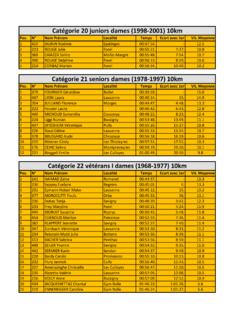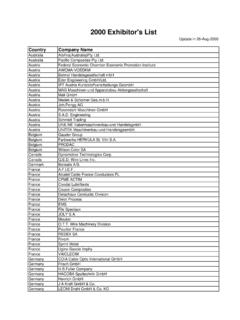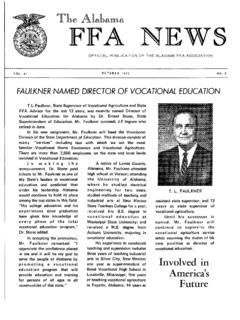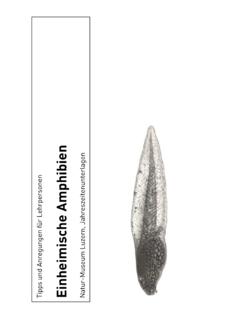Transcription of The plastic extrusion process for tube, hose, pipe, …
1 Page 1 The plastic extrusion process for tube, hose, pipe, and rod. Contents: Introduction. Equipment. Materials. Processing parameters. Product design considerations. Upstream Line Equipment. Incoming raw materials inspection. Resin handling for moisture content and temperature. Resin storage and conveyance. Gravimetric resin feeding. The Extruder. Selection criteria. Controlled and monitored parameters. Thermocouples and RTDs.
2 Instrument calibration. Downstream Line Equipment. Resin filter or screen changer. Melt gear pump. extrusion die assembly. The air gap and quench entry. Extrudate quench and cooling. Product measurement instruments. Line speed controller in the form of a belt puller or nip roll set. Product cut-off device or winding equipment. Common tube, hose, and pipe product types. Conclusion. Page 2 Figures, photos and images. Figure 1, representative pipe extrusion line, photo courtesy of Davis-Standard. Figure 2, portable resin hopper-dryer assembly, photo courtesy of Conair. Figure 3, general extruder assembly, photo courtesy Davis-Standard.
3 Figure 4, rotary-style continuous screen changer, photo courtesy of Patt Filtration. Figure 5, melt pump assembly with motor drive, photo courtesy of Zenith Pumps. Figure 6, in-line spiral tube extrusion die, image courtesy of StreamLine extrusion . Figure 7, crosshead extrusion die with spiral manifold, image courtesy of StreamLine extrusion . Figure 8, 10-foot free extrusion cooling tank, photo courtesy of RDN Manufacturing. Figure 9, vacuum sizing and cooling tank, photo courtesy of RDN Manufacturing. Figure 10, dual-axis laser measurement scanner, photo courtesy of Zumbach Electronics. Figure 11, three-axis flaw detection scanner, photo courtesy of Zumbach Electronics.
4 Figure 12, belt puller assembly, photo courtesy of Conair. Figure 13, fly-knife cutter, photo courtesy of Conair. Figure 14, top-cut traveling cut-off saw, photo courtesy of RDN Manufacturing. Page 3 The plastic extrusion process for tube, hose, pipe, and rod. Introduction. plastic extrusion of tube, hose and pipe is a steady-state process for converting a thermoplastic raw material to a finished or near-finished annular product. The raw material is usually in the form of plastic pellets or powder. The conversion takes place by forming a homogeneous molten mass in the extruder and forcing it under pressure through an extrusion die orifice that defines the shape of the product's cross section.
5 The formed material, or extrudate, is cooled and drawn away from the die exit at a controlled rate. The extrudate can then be wound on a spool, cut to a specified length, or directed into another in-line process . By contrast with injection molding or blow molding, which are cyclic processes, extrusion is a steady-state process . This steady-state characteristic produces some unique benefits and challenges as a manufacturing process . Extruded products are very long and continuous, and have a cross section that is usually constant with respect to the axis or direction of production. Injection-molded products are discrete items with varying cross sections in each axis.
6 The fact that the extrusion of tube, hose and pipe is a steady-state process will be discussed in many areas of this article. The terminology used for describing tube, hose and pipe varies from industry to industry. For the use in this article, tube products are 1 in outer diameter or less, and are products that need to be flexible in their use. Examples of tubing include medical catheters or flexible pneumatic tubing. Hose products are generally 1 in outer diameter and greater, and are products that also are flexible in their use. Garden or irrigation hose are good examples of hose products. Pipe products are generally rigid in form when compared to tubing and hose, and can be any diameter in size.
7 Pipe products can range from diameter water pipe made from CPVC, up to 60 diameter corrugated drainage pipe made from HDPE. These naming conventions are arbitrary and are used for convenience. Equipment. The major components of a tube, hose, or pipe extrusion system are often divided into components that are upstream of the extruder, the extruder itself, and those that are downstream of the extruder. Upstream components include resin handling equipment for conveying the raw materials to the extruder, and resin conditioning equipment that will pre-heat the resin, or control the moisture content of the resin before it enters the extruder feed throat.
8 The downstream components include a molten resin filter or screen changer, the extrusion die assembly, the quench or vacuum sizing tank, any product measurement instruments, the extrusion line speed controller in the form of a belt puller or nip roll set, and finally a product cut-off device or winding equipment. There are additional extrusion process methods that will take the extruded product directly into another in-line process Page 4 for the addition of a reinforcement braiding or for the addition of other coatings or resin layers. Figure 1 shows a representative pipe extrusion line, including the extruder, vacuum tank, belt puller, and cutoff saw.
9 Figure 1, courtesey Davis-Standard Materials. extrusion techniques can be used to process most thermoplastics and some thermoset plastics. The resins most commonly extruded for tube, hose and pipe products include high and low density polyethylene, polypropylene, polyurethane, polystyrene, fluoropolymers, nylon, polyester, ABS, and flexible and rigid PVC. A characteristic that often differentiates extruded resins from injection-molded resins is the melt viscosity of the plastic at normal processing temperatures. Extruded plastics often have a higher melt viscosity, which allows the extrudate to retain the shape imparted to it by the die while the extrudate is in the quenching stages.
10 Combinations of various resins can be used to gain special physical, biological, or chemical properties. Many additives can be used during the extrusion process to enhance processing characteristics of the polymer or to alter product properties. Such additives include lubricants, thermal stabilizers, antioxidants, radiopacifying agents, and colorants. Processing Parameters. The parameters important to extrusion processing are similar to those of injection molding processes. Resin temperature, resin pressure, resin moisture content, screw speed, and screw motor amperage are usually controlled or monitored to provide a homogeneous melt at a controlled volumetric rate.







